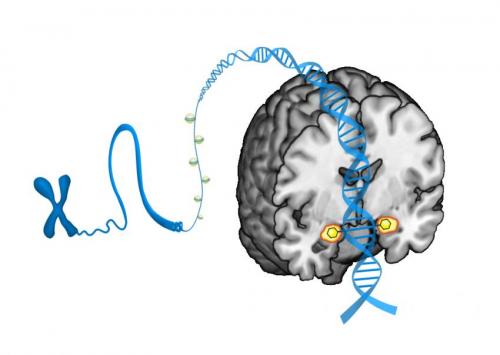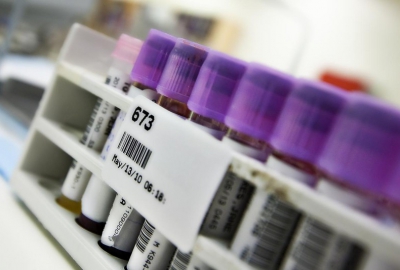The tiny addition of a chemical mark atop a gene that is well known for its involvement in clinical depression and posttraumatic stress disorder can affect the way a person's brain responds to threats, according to a new study by Duke University researchers.
The results, which appear online August 3 in Nature Neuroscience, go beyond genetics to help explain why some individuals may be more vulnerable than others to stress and stress-related psychiatric disorders.
The study focused on the serotonin transporter, a molecule that regulates the amount of serotonin signaling between brain cells and is a major target for treatment of depression and mood disorders. In the 1990s, scientists discovered that differences in the DNA sequence of the serotonin transporter gene seemed to give some individuals exaggerated responses to stress, including the development of depression.
Sitting on top of the serotonin transporter's DNA (and studding the entire genome), are chemical marks called methyl groups that help regulate where and when a gene is active, or expressed. DNA methylation is one form of epigenetic modification being studied by scientists trying to understand how the same genetic code can produce so many different cells and tissues as well as differences between individuals as closely related as twins.
In looking for methylation differences, "we decided to start with the serotonin transporter because we know a lot about it biologically, pharmacologically, behaviorally, and it's one of the best characterized genes in neuroscience," said senior author Ahmad Hariri, a professor of psychology and neuroscience and member of the Duke Institute for Brain Sciences.
"If we're going to make claims about the importance of epigenetics in the human brain, we wanted to start with a gene that we have a fairly good understanding of," Hariri said.
This work is part of the ongoing Duke Neurogenetics Study (DNS), a comprehensive study linking genes, brain activity and other biological markers to risk for mental illness in young adults.
The group performed non-invasive brain imaging in the first 80 college-aged participants of the DNS, showing them pictures of angry or fearful faces and watching the responses of a deep brain region called the amygdala, which helps shape our behavioral and biological responses to threat and stress.

















